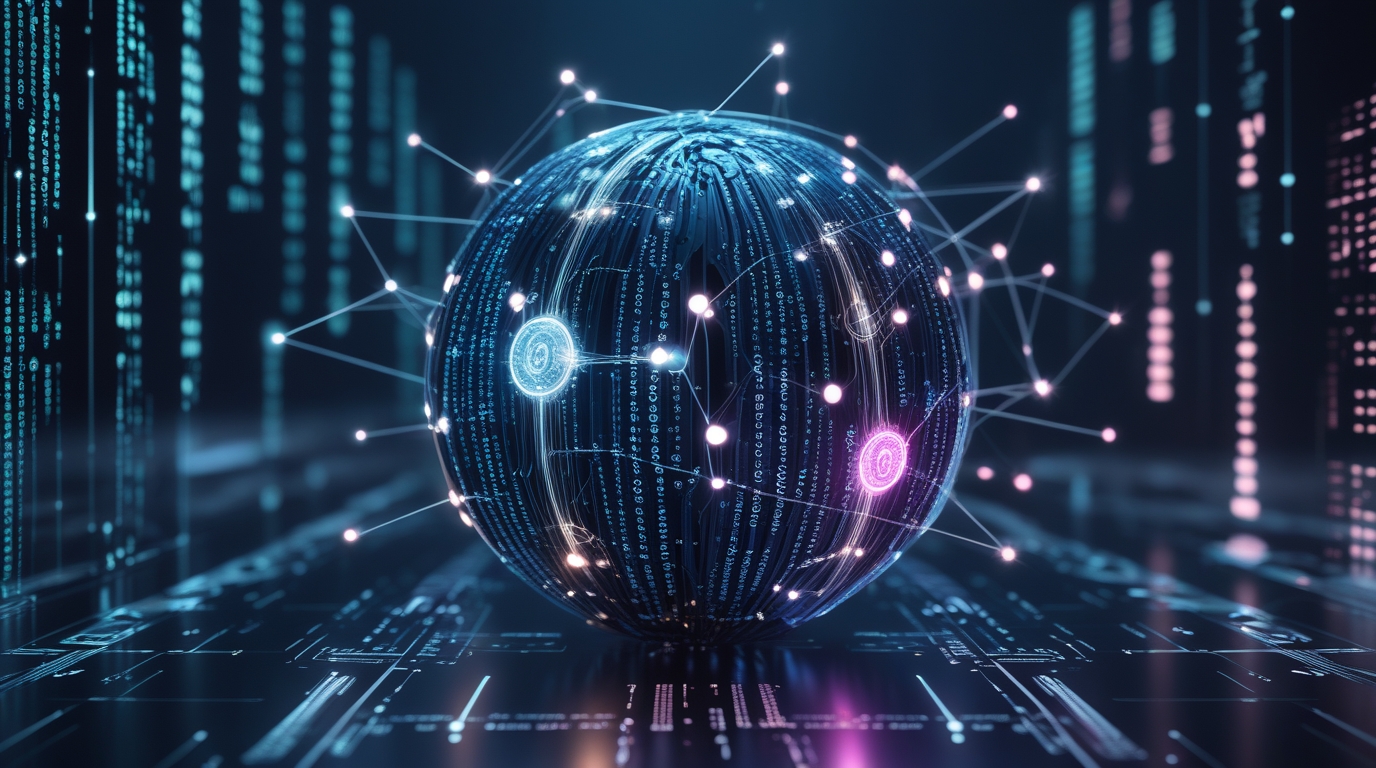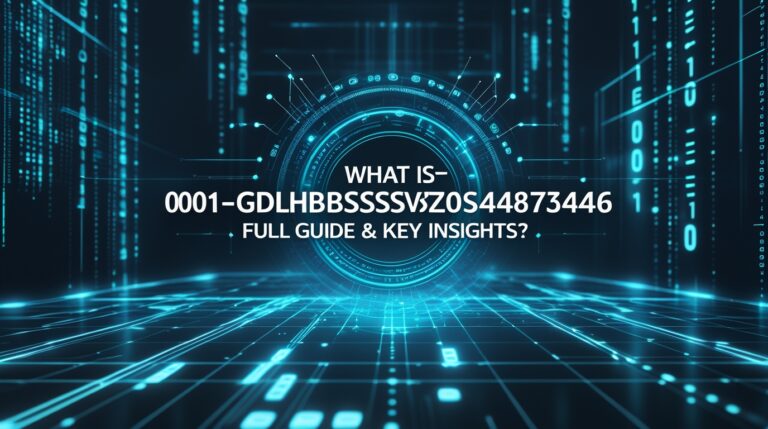In today’s data-driven world, digital identifiers and encrypted codes often hold more significance than what appears on the surface. One such identifier, 001-gdl1ghbstssxzv3os4rfaa-3687053746, has recently captured attention among tech enthusiasts and cybersecurity professionals alike. Though it may look like a random string of letters and numbers, this code structure exemplifies how modern systems manage authentication, traceability, and security.
This guide explores the origins, potential uses, and underlying logic of 001-gdl1ghbstssxzv3os4rfaa-3687053746, examining it from a technical and human perspective. We’ll also look into how such identifiers fit into today’s digital ecosystems and why they matter more than most people realize.
1. The Story Behind the Identifier
Every piece of code tells a story. The structure of 001-gdl1ghbstssxzv3os4rfaa-3687053746 resembles the formatting patterns used in serialized identifiers, cloud data tracking systems, and digital authentication processes. The first section “001” often symbolizes a version or category index, followed by a unique alphanumeric string and a numerical suffix that may represent an internal database ID or timestamp.
While this identifier’s exact source may not be publicly documented, codes with similar structures are typically created by automated systems for tracking software builds, user sessions, or encrypted access keys. They’re designed to be globally unique, ensuring no duplication occurs within complex data environments.
2. Understanding Its Technical Composition

The identifier can be broken down into three functional parts:
-
001 – Typically denotes the batch or version. It could indicate the first generation or type within a larger framework.
-
gdl1ghbstssxzv3os4rfaa – A unique hash or cryptographic representation. This section is where individuality and data integrity lie.
-
3687053746 – A numeric reference, possibly a sequence ID, device registration number, or timestamp representation.
Together, these segments create a high-entropy identifier, meaning it’s designed to resist prediction or duplication—two crucial features in secure system design. This kind of structure is frequently used by AI algorithms, cloud storage services, and cryptographic platforms.
3. How Identifiers Like This Are Used in Modern Technology
Identifiers such as 001-gdl1ghbstssxzv3os4rfaa-3687053746 play a foundational role in technology infrastructure. They might look obscure, but they perform essential functions behind the scenes. In enterprise-grade systems, such identifiers are often applied in:
-
API authentication and security layers
-
Digital asset tracking across distributed ledgers
-
Software build management and version control
-
User session identifiers for secure logins
-
Machine learning model referencing
In short, every time you log in to a website, purchase something online, or access a secure document, an identifier like this may be silently ensuring your transaction is safe and traceable.
4. Why Such Identifiers Exist: The Purpose of Digital Fingerprints
The modern digital world depends on precision. Each transaction, upload, or code execution must be traceable without risking privacy or integrity. That’s where identifiers like 001-gdl1ghbstssxzv3os4rfaa-3687053746 come into play.
These “digital fingerprints” serve as a universal method of reference, ensuring that no two files, users, or events share the same identity marker. It’s a way for machines to communicate authenticity in a humanly unreadable yet perfectly accurate language.
5. Security and Encryption Implications
The long alphanumeric section of 001-gdl1ghbstssxzv3os4rfaa-3687053746 resembles encrypted keys often generated through hashing algorithms such as SHA-256, MD5, or Base58. These cryptographic formats help prevent unauthorized access or tampering.
In cybersecurity frameworks, identifiers like this aren’t just labels — they’re shields. Each one is built using complex mathematical processes that ensure integrity, immutability, and privacy. That’s why large corporations, banks, and cloud providers depend heavily on this model of unique identification.
6. Potential Real-World Applications
The versatility of identifiers like 001-gdl1ghbstssxzv3os4rfaa-3687053746 makes them adaptable to countless industries. For instance:
-
In Software Development: Used for build tracking, version management, and deployment verification.
-
In Cloud Computing: Enables data synchronization and file identity across distributed servers.
-
In Blockchain: Supports asset tagging, ensuring digital tokens remain unique.
-
In AI Systems: Links datasets and ensures reproducibility in training models.
-
In Cybersecurity: Tracks encryption events, firewall interactions, and authentication logs.
This kind of versatility underscores why structured identifiers are at the heart of digital transparency and traceability.
7. Tracing and Validation of 001-gdl1ghbstssxzv3os4rfaa-3687053746
When an identifier like this appears in a system or URL, it can be traced and validated through multiple methods. Developers or IT professionals often use checksum algorithms or API call verification to confirm whether it’s authentic.
For users who encounter this identifier unexpectedly—say, in a browser link or software interface—it’s wise to check the origin domain or associated platform. A legitimate identifier will always be traceable to a verified source or server.
8. Privacy, Ownership, and Ethical Considerations
Although identifiers like 001-gdl1ghbstssxzv3os4rfaa-3687053746 are highly secure, they also spark discussions around privacy. If used improperly, unique identifiers could potentially be linked to user data or personal actions. That’s why compliance with regulations such as GDPR (General Data Protection Regulation) and CCPA (California Consumer Privacy Act) is critical.
Modern encryption standards ensure that these identifiers are non-reversible — meaning the code can’t be used to directly identify a person or file content. Still, ethical management of digital identifiers remains a priority in global cybersecurity conversations.
9. How to Handle or Interpret This Identifier
For those who come across 001-gdl1ghbstssxzv3os4rfaa-3687053746, here’s a practical guide to handling it properly:
-
Identify its context — Is it linked to a software product, website, or document?
-
Check source authenticity — Only trust identifiers associated with legitimate, verified domains.
-
Avoid altering or deleting — Modifying these codes can break essential verification processes.
-
Consult documentation — Most systems that use identifiers offer official documentation explaining their structure.
-
Engage support teams — If uncertain, reaching out to the provider ensures accuracy and safety.
Taking these steps protects both your system and the integrity of the identifier.
10. The Broader Context: Digital Identity and the Future
Identifiers like 001-gdl1ghbstssxzv3os4rfaa-3687053746 symbolize the evolution of digital identity systems. As technology moves toward more decentralized and secure infrastructures, unique keys and identifiers will become even more prevalent.
Future innovations may see these identifiers integrated into biometric systems, quantum encryption, and blockchain-based identity networks. They’ll form the connective tissue between human identity and machine logic — providing both security and efficiency on a global scale.
11. Lessons from Technological History
The concept of unique digital identifiers isn’t new. Early internet systems relied on simple numeric tags, but as data complexity grew, developers began generating longer, more intricate identifiers to meet security demands.
From UUIDs (Universally Unique Identifiers) to GUIDs (Globally Unique Identifiers), every iteration has aimed to improve precision, reduce collision risks, and strengthen verification systems. 001-gdl1ghbstssxzv3os4rfaa-3687053746 stands as a modern reflection of that evolution — combining structure, randomness, and reliability into a single code.
12. Final Thoughts
In an increasingly digital society, codes like 001-gdl1ghbstssxzv3os4rfaa-3687053746 are more than random strings—they represent the unseen architecture of security and connectivity that drives the internet and global data networks. Understanding how they function gives users a deeper appreciation for the sophistication of modern technology.
Whether it’s securing financial transactions, managing cloud data, or supporting AI systems, these identifiers ensure everything stays unique, safe, and traceable. The next time you see one, remember—it might be the invisible signature keeping your digital world intact.
Frequently Asked Questions (FAQs)
1. What does 001-gdl1ghbstssxzv3os4rfaa-3687053746 actually represent?
It’s a structured identifier likely used for tracking or authentication purposes. While its exact origin is not public, it resembles the type of code used in encrypted systems, software builds, or cloud-based platforms to ensure unique and verifiable digital identities.
2. Is this identifier related to any specific company or technology?
There’s no public record tying it to a single company, but similar identifiers are commonly used in enterprise security, data synchronization, and AI-driven platforms. These structures are essential for managing large volumes of digital information securely.
3. Could 001-gdl1ghbstssxzv3os4rfaa-3687053746 be harmful or a virus?
No, by itself, this code is not harmful. It’s simply a sequence of characters with a functional or reference purpose. However, if found in suspicious emails or unverified downloads, always scan the source for safety before interacting with it.
4. How do developers create identifiers like this?
Developers use cryptographic hash functions or UUID generation tools that produce random yet reproducible strings. These algorithms ensure every generated ID remains unique, secure, and compliant with modern encryption standards.
5. Why are such identifiers important in cybersecurity?
They play a crucial role in authentication, data integrity, and privacy. Without unique identifiers, digital systems could easily confuse users, files, or transactions — leading to data breaches and security vulnerabilities.
For More Update and Stories Visit: GOLDEN MAGAZINE


